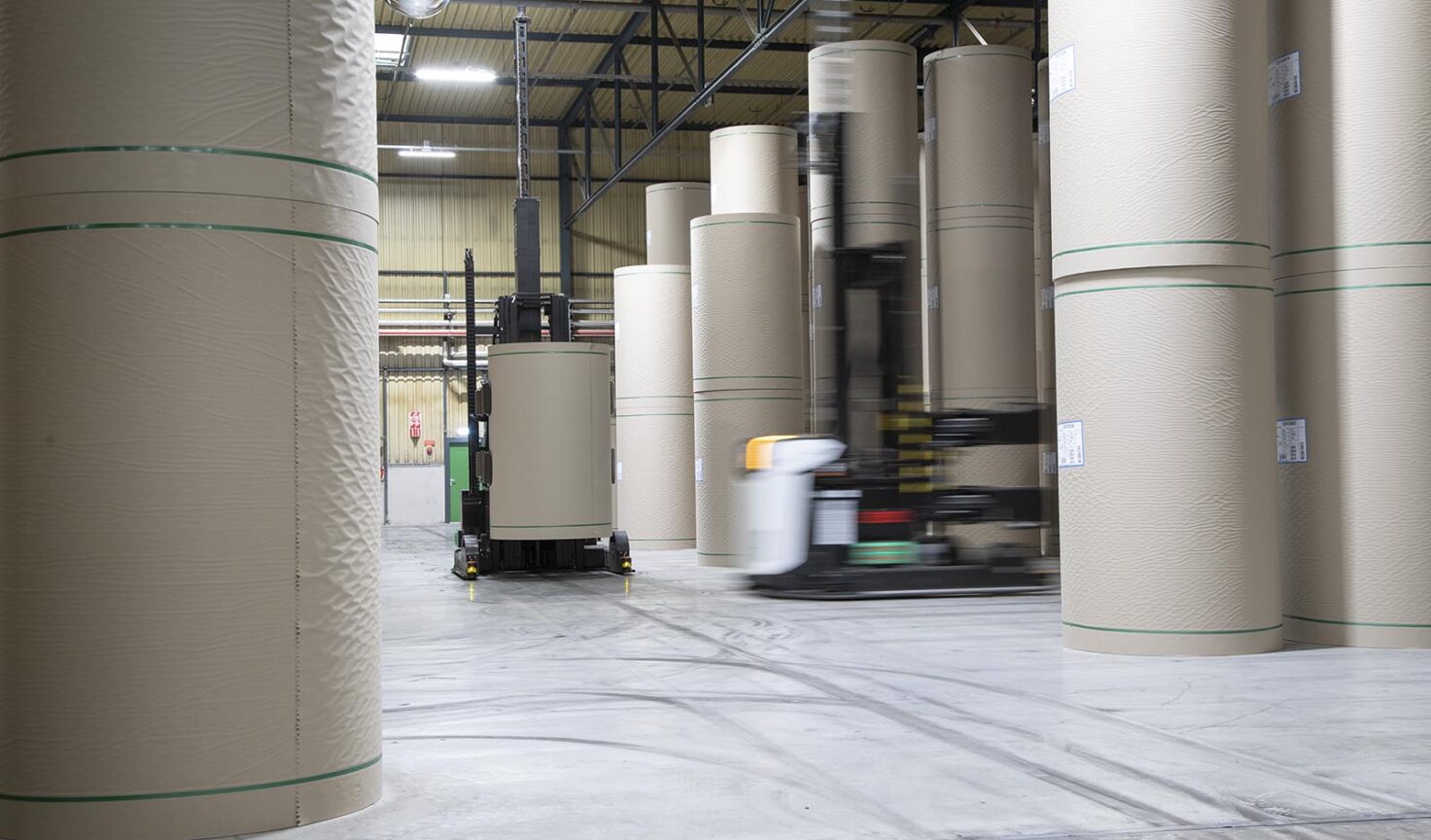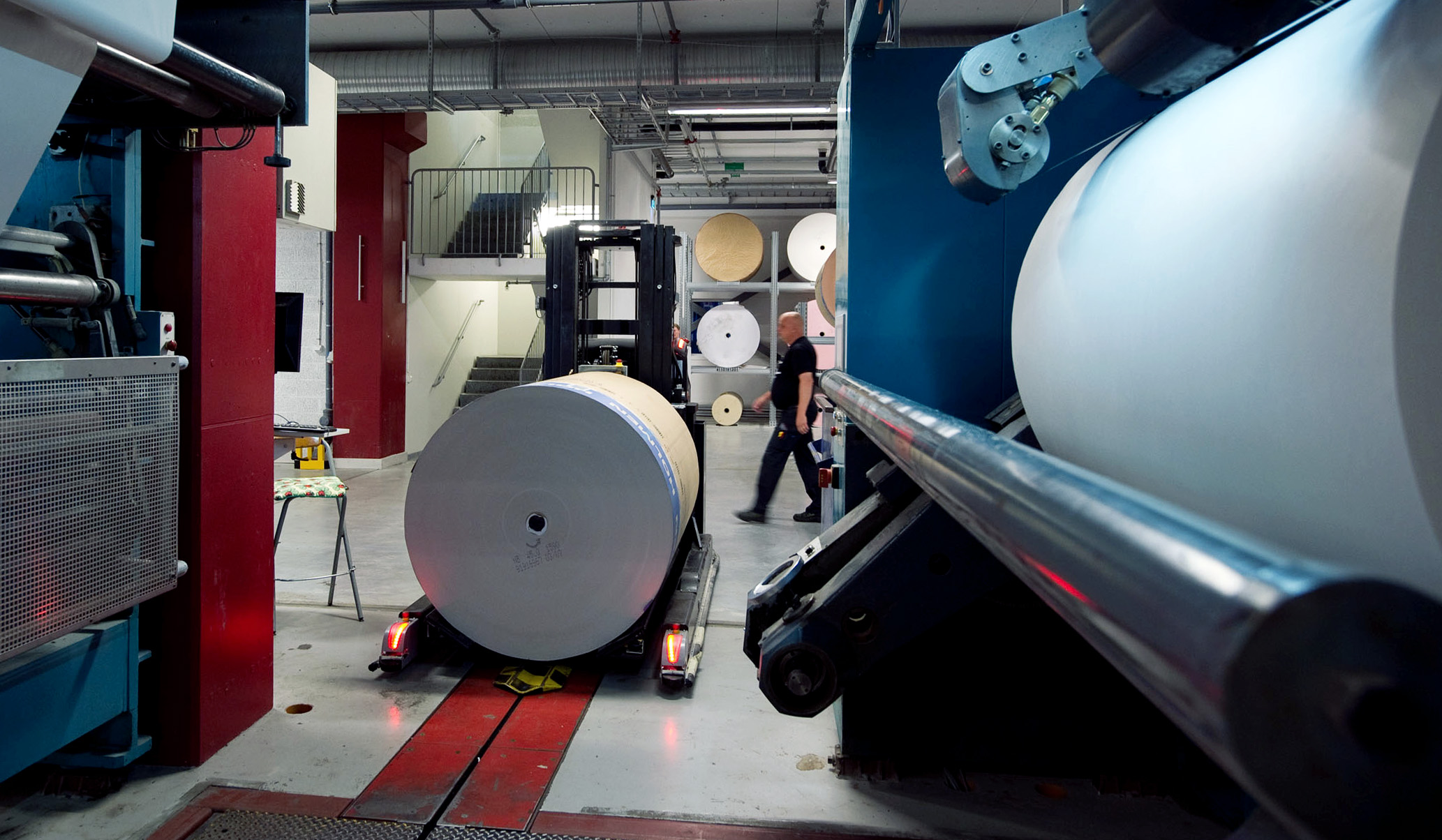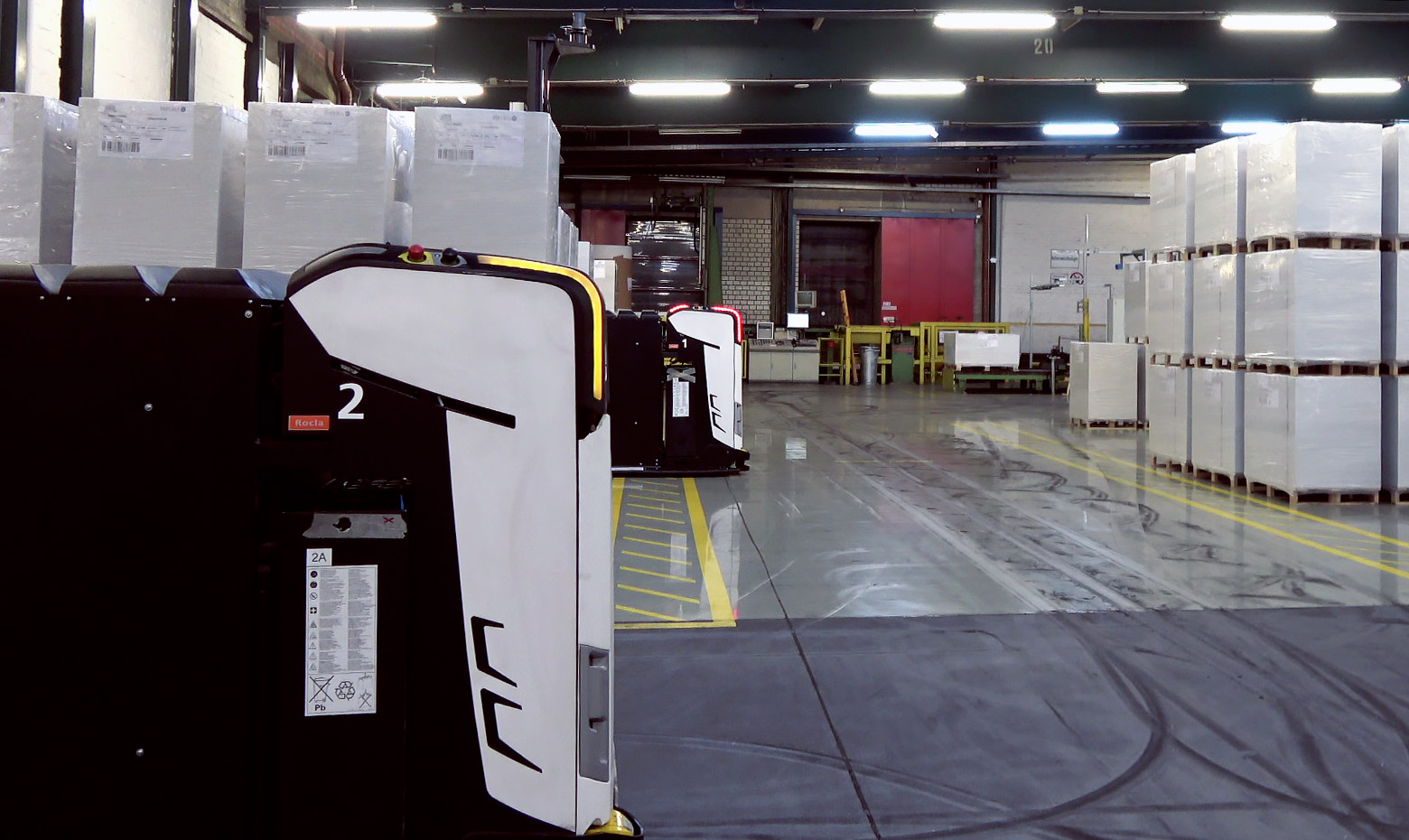Automating a roll warehouse
Blog post by Antti Aakko
Are you thinking about automating your manually operated roll warehouse? In mill (outbound) warehouses or converting plant raw material warehouses, rolls are often stored and stacked on top of each other in so-called block storage. This kind of warehouse is commonly operated with large manual clamp trucks, and it is possible to automate this process with Rocla AGVs. Several of our paper industry customers have done it earlier. In this blog post, I’ll tell you what to consider when automating a roll warehouse and why you should do it.

Our most common roll warehouse automation is the product warehouse after the winder in a paper/paperboard mill. The rolls are picked from the incoming conveyor, transported to the storage area, and stacked on top of each other on storage lanes. WMS controls the warehouse and tells the AGV system the correct position for the roll.
In an AGV-operated roll warehouse, the warehouse layout should be designed in a way that we can have the lines with only similar products (or SKUs, stock-keeping units) in one line. This way, we can reduce the “digging” work and always access every product in the warehouse without any extra work. This will improve AGV system capacity dramatically. Based on the shipping forecast from ERP, WMS will command AGV system to prepare shipments to the staging area. If the forecasting is reliable and there is enough space in the shipping area, it is possible to prepare shipments well beforehand.
My top tips – things to consider
- Flow – Is the flow of the rolls even, or are there significant fluctuations? If you install an AGV system after the winder, the flow of the rolls is relatively even throughout the day, depending on the current set of rolls you are producing. However, the incoming roll flow is constant. This is most often the incoming feed to our automated roll warehouse. The outgoing flow from the warehouse is often to the staging area, where loads are prepared for transport. This flow is probably not in operation 24/7, but quite often 16/5 (16 hours per 5 days a week). If you are on the converting side, you will likely receive rolls on a batch with incoming trailers, and you will need to clear the receiving area for the next trailer. This will require peak capacity.
- Roll measurements and variation – Roll diameter, width and weight determine the mechanical requirements of a roll clamp AGV. The rule of thumb is that automation is more efficient in a process with no substantial deviation in loads, flow, etc. So, if you have a considerable variation on your rolls, it might reduce the efficiency. Let’s say that 95% of the rolls you produce are under 3000 kg and have a diameter of 1500 mm. Then, once per month, you will produce some 4500 kg rolls with 1800 mm diameter. AGV system would need to be sized based on this heavier roll with a larger diameter, but most of the time, it will transport much smaller rolls. It might make sense to transport these large rolls manually and size the AGV system based on smaller rolls. This is case-dependent, and we can make the required analysis and suggest different options for you.
- SKU variation – Practically, this means interchangeable products in the warehouse. Rolls with the same grade, diameter and width are often of the same SKU. (We know there might be other factors, such as packaging, core size, customer order and so on). If there is only one product in your roll warehouse, the layout design is relatively easy, and we can use the space more efficiently. However, if there are several hundreds of SKUs and most of them are with small amounts of rolls, we must keep that in mind while designing the warehouse layout. There are solutions for these kinds of situations as well.

“Why would I automate my roll warehouse?”
There are several points in favour of automating your roll warehouse operations. Here are the three most important ones to consider:
- Control and traceability of products – You will always know where each roll is and have an up-to-date inventory. Possibility to use shipping forecasts for trailer load preparation.
- No roll damage – Rolls are handled smoothly and consistently. AGVs are programmed to use only the required clamping power to handle the rolls safely, and no excess force is used for clamping to ensure smooth handling. AGVs also always clamp the roll from the correct position.
- Safe to people and surroundings – Rocla AGVs are CE-marked and designed following the ISO 3691-4:2020 AGV safety standard requirements where applicable. Automating your warehouse will increase safety and reduce damage to goods, machinery and surroundings.
Do you feel that now would be the right moment to consider automation and gain more efficiency in your operations? Would you like to gain more insights into your warehouse and your processes?
Send me a message or give me a call, and let’s chat more.



